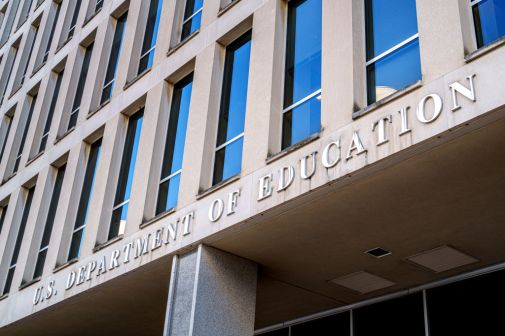Obama unveils computer science education initiative to reach more students

President Barack Obama wants to make good on his promise to make computer science accessible to all students.
Obama announced Saturday during his weekly address that he will request in his federal budget $4 billion for states and $100 million in competitive grants for districts to offer kids more computer science classes, and provide teachers with training.
“In the new economy, computer science isn’t an optional skill – it’s a basic skill, right along with the three “Rs,” he said in the address. “Nine out of 10 parents want it taught at their children’s schools. Yet right now, only about a quarter of our K-12 schools offer computer science.”
Obama will make the funding request in his proposed fiscal 2017 budget, which will formally be announced in early February. It is unclear whether Congress will approve the budget, but the administration looks on the recent, successful bipartisan passage of the Every Student Succeeds Act as a positive sign.
“We are going to build momentum to expand computer science education, and ask Congress to empower states with the resources to provide computer science education,” said acting Education Secretary John King during a White House press call ahead of the announcement.
Cartoon Network, Google and Salesforce.org also announced more than $60 million in new philanthropic investments as part of the initiative. Microsoft will campaign heavily across all 50 states in an effort to get the word out, and Code.org will offer training to 25,000 teachers this year.
Earlier this month, Obama hinted that there would be a new policy announcement around computer science education.
“In the coming years, we should build on that progress — by providing pre-K for all [and] offering every student the hands-on computer science and math classes that make them job-ready on day one,” he said during his State of the Union address.
According to experts, half a million jobs over the next decade will require computer science skills – from agriculture to manufacturing to information technology.
“Other countries are moving ahead of the U.S.,” said Brad Smith, president of Microsoft, adding that China, the United Kingdom and Estonia have embraced computer science.
“We’re moving, frankly, more slowly,” he said.
But challenges remain — 22 states currently do not allow the subject to count toward high school graduation requirements, and only roughly 4,000 high schools out of more than 37,000 do not offer Advanced Placement Computer Science courses.
There is also the tough task of training thousands of teachers around the country. The National Science Foundation and the Corporation for National and Community Service have allotted $135 million in existing funds to support and train teachers, but Smith said there is still a steep learning curve.
“It’s a new field for many [teachers],” he said. “Certainly one approach is to pair existing teachers in schools with individuals who are employees in tech companies.”
U.S. Chief Technology Officer Megan Smith highlighted existing initiatives advancing STEM and technology in the classroom, and said she is heartened by the momentum that is building from the White House. Just last week, the White House invited students, entrepreneurs and educators as “Champions of Change for Computer Science Education.”
Computer science, she said, is “not an optional skill.”
“It’s a core skill that all our students need a chance to master,” she said.
Reach the reporter at corinne.lestch@edscoop.com, and follow her on Twitter @clestch and @edscoop_news.






